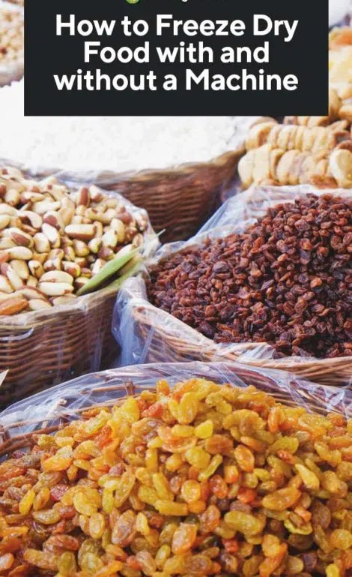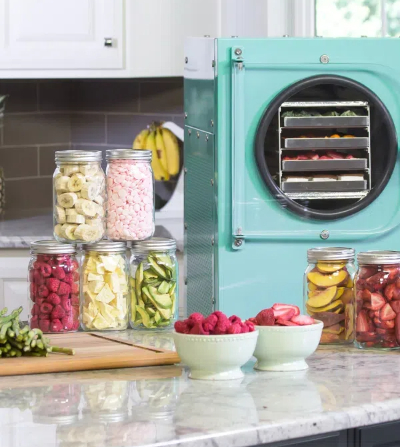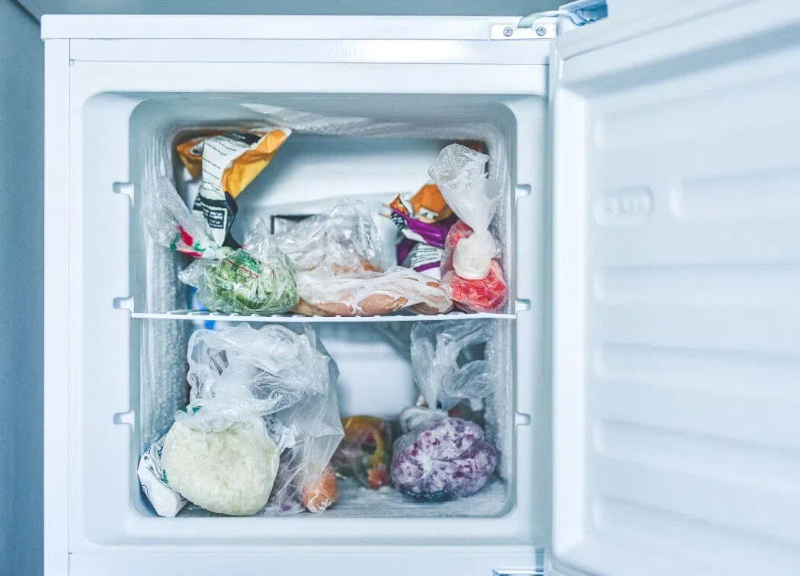
Content Menu
● Introduction
● Understanding Freeze-Drying
>> Benefits of Freeze-Dried Food
● DIY Freeze-Drying Methods
>> 1. The Freezer Method
>>> Steps:
>> 2. The Dry Ice Method
>>> Steps:
>> 3. The Vacuum Chamber Method
>>> Steps:
● Choosing the Best Foods for Freeze-Drying
● Tips for Successful DIY Freeze-Drying
● Rehydrating Freeze-Dried Food
● Safety Considerations
● Comparing DIY Methods to Commercial Freeze-Dryers
● Creative Uses for Freeze-Dried Foods
● Conclusion
● Frequently Asked Questions
>> 1. How long does freeze-dried food last?
>> 2. Can all foods be freeze-dried?
>> 3. Is freeze-dried food healthy?
>> 4. How do I know when my food is completely freeze-dried?
>> 5. Can I freeze-dry liquids?
Introduction
Freeze-drying is an excellent method for preserving food, maintaining its nutritional value, and extending its shelf life. While commercial freeze-dryers are available, they can be expensive and not always practical for home use. Fortunately, there are several DIY methods to freeze dry food without a machine. In this comprehensive guide, we'll explore the easiest ways to freeze dry food at home, discuss the benefits of this preservation technique, and provide step-by-step instructions for various methods.
Understanding Freeze-Drying
Freeze-drying, also known as lyophilization, is a process that removes moisture from food while preserving its structure and nutritional content. This method involves freezing the food and then removing the ice through sublimation, where ice turns directly into vapor without passing through the liquid state. The result is a lightweight, shelf-stable product that can be easily rehydrated.
Benefits of Freeze-Dried Food
1. Long shelf life (up to 25 years for some foods)
2. Retention of nutritional value
3. Preservation of flavor and texture
4. Lightweight and easy to store
5. Quick rehydration

DIY Freeze-Drying Methods
While commercial freeze-dryers offer the most efficient and controlled process, there are several methods you can use to freeze dry food at home without a machine. Let's explore these techniques in detail.
1. The Freezer Method
This is perhaps the simplest method, requiring only a freezer and some patience.
Steps:
1. Prepare your food by washing, slicing, or chopping it into small, uniform pieces.
2. Arrange the food in a single layer on a baking sheet or wire rack.
3. Place the tray in your freezer, ensuring it's set to the coldest setting.
4. Leave the food in the freezer for several weeks, allowing the moisture to slowly sublimate.
5. Check the food periodically for dryness. When it's completely dry and brittle, it's ready.
2. The Dry Ice Method
This method uses the extremely low temperature of dry ice to freeze the food quickly and remove moisture.
Steps:
1. Prepare your food as in the freezer method.
2. Place the food in a single layer in an insulated container or cooler.
3. Add dry ice to the container at a 1:1 ratio by weight with the food.
4. Cover the container loosely, allowing the gas from the sublimating dry ice to escape.
5. Leave undisturbed for 24-48 hours.
6. Check the food for dryness and repeat if necessary.
3. The Vacuum Chamber Method
This method mimics commercial freeze-dryers on a smaller scale.
Steps:
1. Freeze your prepared food solid in your regular freezer.
2. Place the frozen food in a vacuum chamber or vacuum-sealed bag.
3. Use a vacuum pump to remove the air and create a low-pressure environment.
4. Leave the food in this state for several days to weeks, depending on the food type.
5. Check periodically for dryness.

Choosing the Best Foods for Freeze-Drying
While many foods can be freeze-dried, some are better suited to the process than others. Here are some excellent options:
1. Fruits: Berries, apples, bananas, peaches
2. Vegetables: Peas, corn, carrots, broccoli
3. Meats: Chicken, beef, fish (cooked and sliced thinly)
4. Dairy: Cheese, yogurt (in small portions)
5. Herbs and spices
6. Complete meals (casseroles, soups, stews)
Tips for Successful DIY Freeze-Drying
1. Start with high-quality, fresh ingredients.
2. Cut food into uniform, small pieces for even drying.
3. Avoid foods with high fat content, as they don't freeze-dry well.
4. Be patient – the process can take several weeks.
5. Store freeze-dried foods in airtight containers or vacuum-sealed bags.
6. Add oxygen absorbers to storage containers for longer shelf life.
Rehydrating Freeze-Dried Food
One of the great advantages of freeze-dried food is how easily it can be rehydrated. Simply add warm water to the food and let it sit for a few minutes. The amount of water needed will depend on the food type and your desired consistency.
Safety Considerations
While DIY freeze-drying can be a fun and rewarding process, it's important to keep safety in mind:
1. When using dry ice, always wear protective gloves and work in a well-ventilated area.
2. Ensure that all equipment is clean and sanitized before use.
3. Store freeze-dried foods properly to prevent contamination.
4. If you're unsure about the safety of a freeze-dried item, it's better to discard it than risk foodborne illness.
Comparing DIY Methods to Commercial Freeze-Dryers
While DIY methods can produce good results, they do have some limitations compared to commercial freeze-dryers:
1. Time: DIY methods can take weeks, while commercial machines complete the process in days.
2. Consistency: Commercial machines offer more controlled environments, resulting in more consistent results.
3. Capacity: Home methods are limited in the amount of food that can be processed at once.
4. Energy efficiency: Commercial freeze-dryers, while initially more expensive, may be more energy-efficient in the long run.
Creative Uses for Freeze-Dried Foods
Freeze-dried foods aren't just for emergency preparedness. They can be used in various creative ways:
1. As crunchy snacks (freeze-dried fruits)
2. In baking (freeze-dried fruit powders for natural flavoring)
3. For camping and hiking meals
4. In homemade instant soups and meals
5. As pet treats (freeze-dried meats)
Conclusion
Freeze-drying food at home without a machine is possible and can be a rewarding way to preserve your favorite foods. While it requires patience and attention to detail, the results can be impressive. By following the methods and tips outlined in this guide, you can start your freeze-drying journey and enjoy the benefits of this remarkable food preservation technique.

Frequently Asked Questions
1. How long does freeze-dried food last?
Answer: Properly stored freeze-dried food can last up to 25 years, depending on the type of food and storage conditions. It's important to keep freeze-dried foods in airtight containers away from moisture and light for maximum shelf life.
2. Can all foods be freeze-dried?
Answer: While many foods can be freeze-dried, some are better suited to the process than others. Foods with high water content and low fat content work best. Foods with high fat content, like avocados or fatty meats, don't freeze-dry well and may become rancid more quickly.
3. Is freeze-dried food healthy?
Answer: Yes, freeze-dried food retains most of its nutritional value. The freeze-drying process preserves vitamins, minerals, and even enzymes better than many other preservation methods. However, some water-soluble vitamins may be slightly reduced.
4. How do I know when my food is completely freeze-dried?
Answer: Properly freeze-dried food should be crisp and brittle. It should snap when bent, not bend. If there's any moisture or flexibility left, the food needs more time in the freeze-drying process.
5. Can I freeze-dry liquids?
Answer: Yes, liquids can be freeze-dried, but they require special handling. They should be pre-frozen in thin layers or small portions before being subjected to the freeze-drying process. Common freeze-dried liquids include coffee, tea, and even certain dairy products like milk.












